Don't wanna be here? Send us removal request.
Text
Ambessa Medarda (League of Legends) vs Tsukuyomi (Smite)
Ambessa Medarda (2024) from League of Legends and Tsukuyomi (2020) from Smite share a similar concept, both wielding curved blades attached to chains, allowing them to extend their reach in battle. This weapon design is inspired by the kusarigama, a traditional Japanese weapon.
For decades, numerous game characters have showcased variations of the kusarigama weapon in their designs and abilities. Ambessa is among the latest to incorporate the kusarigama theme into their skill set.
1 note
·
View note
Text
From DOTA (2003) to League of Legends (2009): the Original Items Collection (Part 2)
Radiance (DOTA) vs Sunfire Cap (LoL)
Radiance is an item that inflicts 40 damage per second to nearby enemies. Sunfire Aegis in its earliest versions also inflicted roughly 40 damage per second to nearby enemies.


Eaglehorn (DOTA) vs Recurve Bow (LoL)
Eaglehorn confers 25 points of agility / attack speed to DOTA heroes. The recurve bow more or less does the same thing. With a single primary stat modifier, they're both unremarkable, but very similar.

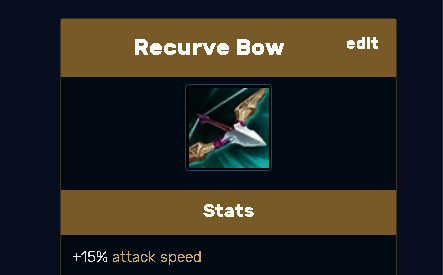
Shiva's Guard (DOTA) vs Frozen Heart (LoL)
Their key functions are identical; they both offset physical damage, boost mana of user, and penalize nearby enemy units by slowing their attacks by 15-20%. Frozen Heart has accumulated additional attributes over the years, but retains the principle functions of Shiva's Guard. Shiva's Guard hails back to the days of WC III; so it is more or less the father of Frozen Heart.

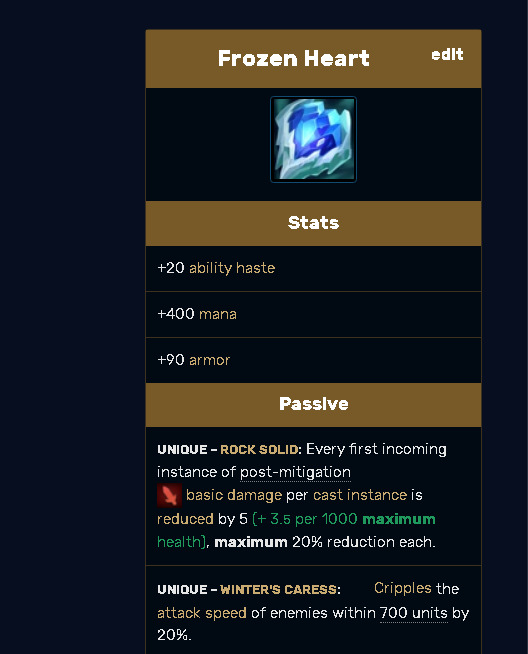
The artwork for Shiva's Guard was lifted from the Warcraft III game. It served as an icon for a principle upgrade for the night elves.

Circlet of Nobility (DOTA) vs Crown of the Shattered (LoL)
Circlet gives a general boost to stats. Crown more or less does the same thing, at significantly higher values. Neither directly confers to attack stats, but serve to confer basic stat boosts to users. Their artwork is proximate, modelled on the same concept: a headband with a green gem front and center.


Lothar's Edge (DOTA) vs Hearthbound Axe
Lother's Edge is one of the few axes in DOTA that confers both attack damage, attack speed, and a special ability that increase move speed by 20%. Hearthbound Axe also confers attack damage, attack speed, and a "unique" attribute that increases move speed by 20. Their stat modifiers vary by value, but functionally are the same.

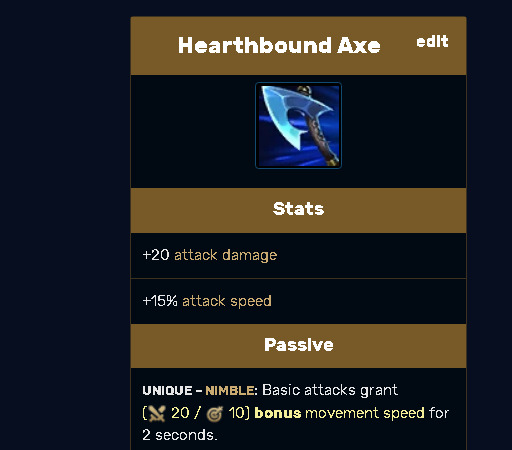
Note: WC III images are the property of Microsoft / Blizzard. WC III images employed in DOTA game are the property of Microsoft / Blizzard.
Backstory: DOTA is a WC III mod that got away from Blizzard, generating or inspiring future MOBA games. In response: Blizzard made it generally impossible for Blizzard users to "own" any custom game they create using Blizzard game tools. This makes sense: Blizzard is a business and generally does not support its competitors present or future. LoL is an unintended side-effect of Blizzard's free game editing tools. So, Blizzard indirectly created a competitor that consistently competes with their games in terms of user registrations and micro-sales.
"Gaming has no plagiarism like League of Legends." - Eugene Beatty
1 note
·
View note
Text
From DOTA (2003) to League of Legends (2009): the Original Items Collection (Part 1)
Sange and Yasha (DOTA) vs Phantom Dancer (LoL)
These are essentially the same item type: they both confer a little attack damage, movement speed, and attack speed to their user. While they may vary in other stats, they share the same role of giving their user a small but significant boost in attack stats and move speeds. Their cross-swords pattern and their similar functions in two MOBA games suggests strongly that Sange and Yasha is a forerunner of the Phantom Dancer.


Blade Mail (DOTA)vs Bramble Vest / Thorn Mail (LoL)
Their functions are fundamentally the same. They give their user a moderate increase in armor and return damage to their attackers. DOTA users were familiar with this Blade Mail item for roughly 6 years before Bramble Vest was featured in LoL.


Stout Shield (DOTA) vs Doran's Shield (LoL)
Their artwork and appearance are inherently the same: a wood shield with a metal rim and a pattern of rivets around the shield. They're both considered starter items in their games, DOTA and LoL, respectively. The function of Stout Shield is to offset damage from attackers slightly. The function of Doran's Shield is inherently similar; it offsets damage from attackers slightly.


Mithril Hammer (DOTA) vs Caufields Warhammer (LoL)
Their appearance and damage modifiers are essentially the same, having only a trivial difference in their artwork and attack modifiers.


Perseverance (DOTA) vs Kindlegem (LoL)
Orbs were items commonly used in WC III and DOTA (2003). They confer stat modifiers. Kindlegem is fundamentally the same concept. Not only does it reference the artwork of Perseverance heavily for its appearance, it more or less serves a similar function of conferring stat modifiers to its user.


Necronomicon (DOTA)vs Morellonomicon (LoL)
Both items are essentially the same. The Necronomicon confers health (strength) and spell power (intelligence) to its user; the Morellonomicon also confers health and spell power to its user. Their stat boosters are worded differently, but they both fulfill the same functions for their users.


Planeswalker's Cloak (DOTA) vs Spectre's Cowl (LoL)


Belt of Giant Strength (DOTA) vs Giant's Belt (LoL)
Regardless of how their stat modifiers are worded, both belts confer health benefits to their users. Their monikers (aka their names) are extremely similar.


Diffusal Blade (DOTA) vs Nashor's Tooth (LoL)
Diffusal Blade and Nashor's Tooth are both unusual yet similar; they both increase attack speed, spell power, but oddly, neither confer physical damage modifiers to their users.


Observer Wards (DOTA) vs Stealth Wards (LoL)
Sight wards in MOBA games go back to WC III; sight wards were an ability of troll spellcasters; they could place an item on the map that would monitor an area for a duration of time. Sight wards became a staple item in DOTA; later, when LoL released, it also features sight wards.


Heart of Tarrasque (DOTA) vs Heartsteel (LoL)
Both items confer health and health regeneration to their users. Their stat modifiers might be worded differently, but their functions are essentially the same. Heart of Tarrasque is the ancestor of Heartsteel, as it was in use in WC III and DOTA for years and years before Riot featured Heartsteel in League of Legends. While it's possible for Riot to have "accidentally" duplicated the Heart of Tarrasque concept, we know for certain that DOTA developer(s) transferred to the LoL project and contributed substantially to LoL.


Kelen's Dagger (DOTA) vs Flash (LoL)
DOTA players did not have summoner's spells per se. They had items that confer spells, such as "blink" which transported their DOTA "hero" a short distance to where their mouse cursor is pointing. Legend of Legend's earliest summoner's spell is "Flash", an ability that transports a "champion" a short distance. Trivia: Blink & Flash are derived from the WC III character Maiev Shadowsong's ability "Blink"; Maiev is an elf assassin who has the ability to transport a short distance to escape enemies or attack them from behind.


Power Treads (DOTA) vs Berserker's Greaves (LoL)
At this point, we expect to see some variation of a WC III or DOTA item in League of Legends. Introducing Power Treads: the original MOBA boots that gave movement speed and attack speed to their user. It's underwent a re-incarnation as "Berserker's Greaves" in League of Legends.


Buriza-do Kyanon (DOTA) vs Immortal Shieldbow (LoL)
Buriza-do Kyanon, the original MOBA crossbow that confers a damage modifier and 20% critical strike chance to user. The Immmortal Shieldbow also confers a high damage modifier and 20% critical strike chance to its user. It was created over 10 years after the original Buriza-do Kyanon made its debut in the Warcraft universe.


Gauntlet of Ogre's Strength (DOTA) vs Iceborn Gauntlet (LoL)
The WC III gauntlet of strength confers health and little more. Riot added their own version of this gauntlet to LoL, over 12 years after WC III / DOTA released.


Similarities between DOTA and League of Legends are not limited to items. DOTA released between 2002 and 2005. It featured a 3-lane map guarded by towers, jungles full of "creeps" / monsters; the goal of the game is for 5 players to use 5 "heroes"; they fight 5 enemy heroes, knock down towers, "farm" enemy units and creeps, and destroy the enemy base to end the game. They're limited to 6 items per hero, use wards to monitor the map, and use teleport spells to travel around the map. Since DOTA developer(s) were recruited by Riot to develop League of Legends, this makes sense.
1 note
·
View note
Text
League of Legends: Original or Knock-Off? Part 2
Vayne (League of Legends) vs "Huntress" (DC Comics) by by Paul Levitz, Joe Staton, and Bob Layton
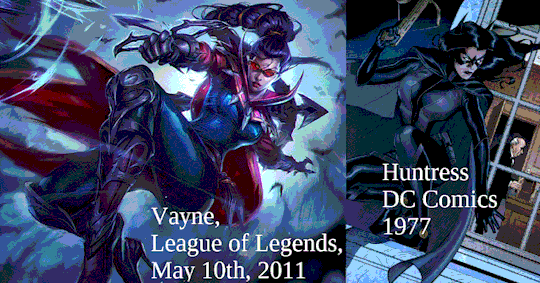
Both characters don a dark-colored, form-fitting suit paired with high-rising boots, a cape, and wield a small crossbow. They share the common traits of dark hair and concealed eyes, embodying a huntress theme that accentuates their stealth abilities.
Additionally, characters like Vayne are inspired by the rise of steam-punk vampire hunter movies such as Van Helsing and vaguely inspired by movies such as Underworld.
Evelynn vs the Night Elf

The night elf is a WC III unit that disappears after a few seconds of not being struck in combat. Incidentally, Eve shares both this ability and some physical characteristics with the Night Elf.
Cho'gath vs Zergling (Star Craft, 1998)

Cho'gath and Zergling share these similarities: both have a monstrous mouths with pincers, feelers shaped like weapons, feet that terminate into two toes, and "hands" with two claws.
Katarina vs Blood Rayne

Katarina and Rayne share significant similarities: they have flaming red hair, wear black leather, share sultry & feral expressions, wield clunky swords, and are both classified as assassins.
On paper: Rayne has special powers that sound similar to Katarina's, such as "spinning blades" and "blade ballet." In practice: Katarina has abilities that visually correspond to these attack descriptions, such as her default spinning blade attacks.
Katarina is also vaguely similar to Red Sonja, an archetype comic book heroine that has red-hair, a warrior's physique, and occasionally, wields two blades. She is vaguely similar to Nariko (voiced by Anne Torv) in Heavenly Sword. She is also compared to Black Widow from the Iron Man comic book series. These characters predate League of Legend's Katarina by a significant number of years.
Teemo vs Final Fantasy Moogle
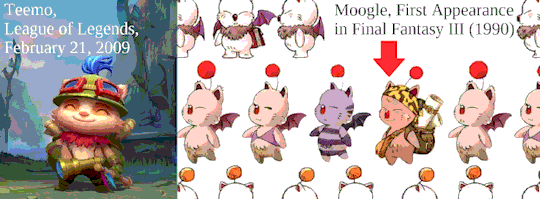
Both are small, fuzzy, adorable, and carry a distinctive backpack that contains scroll(s).
Milio vs Mowgli vs Encanto
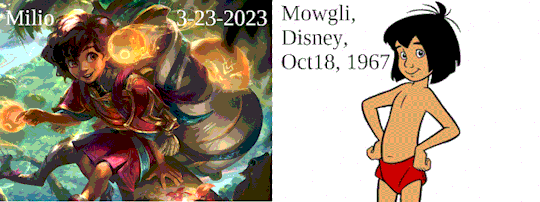
According to online sources. Riot confirms that Milio was inspired by Encanto, a Disney film that features a family in South America with magical abilities.
Milio's is a new League of Legends champion; his theme is fire, which was the theme of the ending of the Jungle Book; Mowgli is a character by Rudyard Kipling who used fire to defeat an opponent. Milio and Mowgli share similarities in appearance; their methods for fighting an opponent are thematically similar; Disney released a film adaptation of the Jungle Books back in the late 60s.
Malphite (2009) vs the Rock Golem (2002, Warcraft III)

Malphite and the WC III Rock Golem share significant similarities: they both have spikes on or near their shoulders, have glowing yellowish eyes and grumpy expressions, and can shoot rock missiles at enemies.
Golems are commonly found in mythology and ancient lore. But Warcraft III gave a more original interpretation of the golem: it features a rock golem with spikes on its shoulders. Gamers have commented that League of Legends has characters very similar to those found in DOTA; DOTA derived characters from Warcraft III. Not surprisingly, Malphite resembles the Rock Golem and has a missile ability that is similar to WC III Golem's missile attack.
Rubi (WET) vs Samira (League of Legends)
Rubi (2009) and Samira (2020) shares some visual similarities, such as dark hair, a sultry look, tattoo on the arms, a red undershirt, middle eastern countenance, duel handguns, a sword slung around her shoulder, and a tri-point jewelry positioned near the left shoulder.
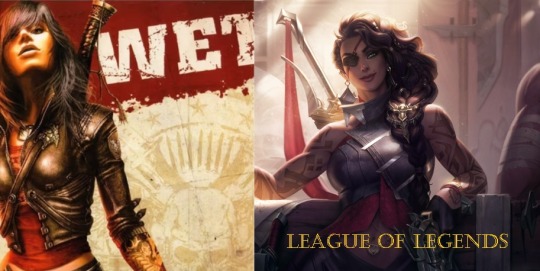
Big Brother (Bioshock) vs Nautilus

Creating a large game character - "big brother" - in a large deep-sea suit or something similar to a deep-sea suit was a creative design decision by the developers of "Bioshock." This decision laid the foundation for a somewhat unique game character capable of fighting opponents and inspiring fear with its formidable size. Bioshock released in 2007. Nautilus released in 2012.
Although Nautilus has specific unique abilities, the concept of a game character in a large deep-sea suit or something similar to a deep-sea suit was already in use years before the release of Nautilus.
Naafiri vs Soul Caliber
Sword from Naafiri cinematic, League of Legends (6-2023):

Soul Edge from Soul Caliber (1996 - last game installation):
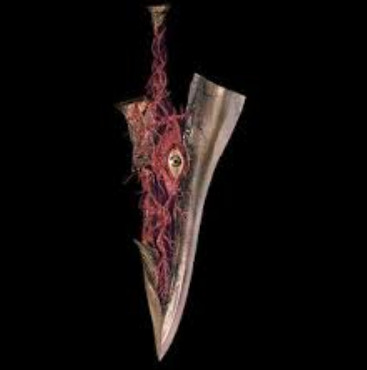
The one-eye sword is a distinctive concept that appeared in the Soul Caliber series. Soul Edge appeared in the series as earlier as 1996. It is a personal and unique interpretation of the sword, providing the basis for a unique video game mythology.
The Invoker (DOTA 2) vs Hwei (League of Legends)
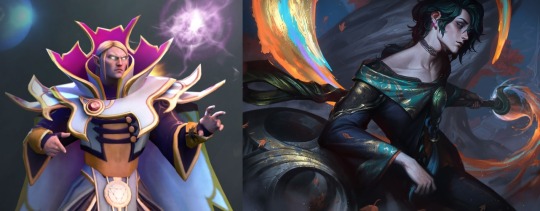
Hwei can cast 10 different spells, marking the entry of a more complex LoL spellcaster capable of casting more spells than other LoL spell-casters. The Invoker (2003 - DOTA 2) features 10 different spells and was one of the earliest MOBA spellcasters known to introduce such an expansive skill set.
The Invoker released 20 years before Hwei did.
Fel Hound (Warcraft III) vs Naafiri (LoL)
Naafiri is a relatively recent Lol champion that features mystical hounds working together to bring down enemies. Some of these hounds are red in color and feature enormous spikes.
The Fel Hounds of Warcraft III are mystical hounds that work together to bring down enemies. These hounds are red in color and feature enormous spikes.

Smolder (LoL) vs Spyro (Spyro) vs Jakiro (DOTA 2) vs Deathwing (HOTS)

Smolder is a new League of Legends champion scheduled to be released in 2024. This character shares some strong conceptual, formulaic, and mechanical similarities to other game characters, such as Spyro, Jakiro, and Deathwing.
Spyro ("Spryo", 1998) is a small dragon character featuring more speed and agility than larger dragons. Smolder is also a small dragon that is conceptually certain to feature more speed and agility than larger dragons.
Jakiro (2003 - DOTA 2) is a dragon hero that has dual attack types: one attack does fire damage and the other impedes the movements of his enemies. Smolder also features dual attack types, with one attack doing fire damage and the other impeding the movements of his enemies.
Deathwing (Heroes of the Storm) is a massive dragon that has the ability to flap his wings and launch himself through the air, ignoring terrain. Smolder also features the ability to flap his wings and launch himself through the air, ignoring terrain.
Deathwing also has the ability to fall from the sky and land in a designated area, dealing AoE damage to enemies. Smolder features a comparable ability that summons a massive dragon from the sky, causing it to land in a designated area, dealing AoE damage to enemies.
Conclusion: Riot reuses themes from films, comics, other games, copying and tweaking character concepts & abilities from other games. It's one thing for a game to include incidental resemblances between its characters and characters from other franchises. It's another thing entirely to find repeated, consistent parallels between League of Legends champions and popular characters in well-known comic books and video games (ex. DC comics, Final Fantasy, Blizzard games, Bandai Namco Studios).
#league of legends#knock-offs?#league of legends vs original works#league of legends vs copyrighted materials#league of legends vs popular comic book characters#league of legends vs myths and legends
0 notes